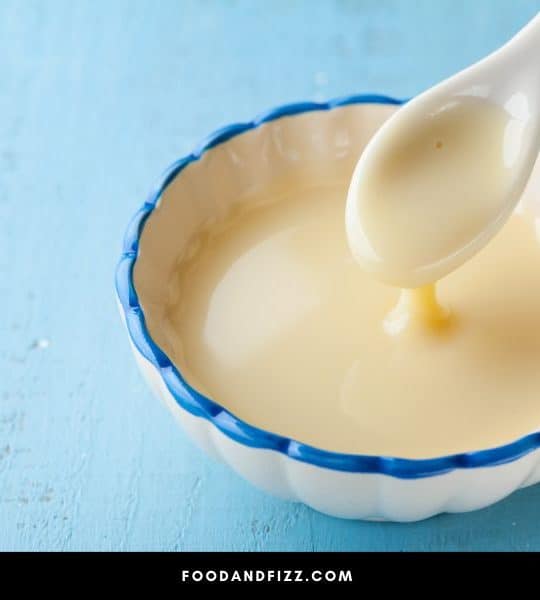Can you imagine a really delicious dessert without heavy cream or condensed milk? You don’t have to be limited to choosing between them, though. They make a great combination too.
Heavy Cream vs. Condensed Milk
Heavy cream is skimmed from the top of the whole milk. Condensed milk results from a process that removes most of the liquid from a mixture of whole milk and sugar. It contains less fat than heavy cream and is less stable. This doesn’t mean it cannot be used as a substitute for heavy cream in some recipes.
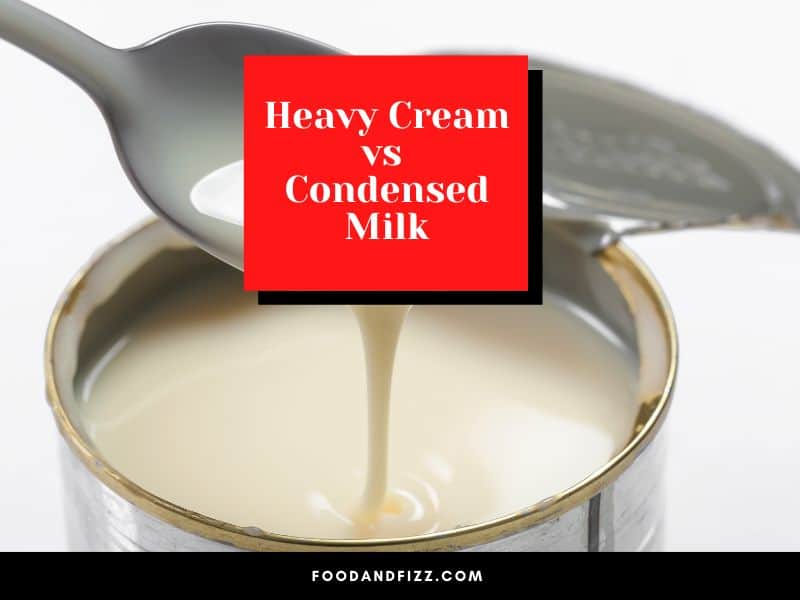
The differences between heavy cream and condensed milk may seem significant but read on to find out more about how they can work together.
What is Heavy Cream?
All cream is the top layer of milk fat that gathers on top of fresh milk. This makes the cream a mixture of milk and milk fat. Heavy cream has at least 36% fat content but can have as much as 40% fat. It is a rich, high-fat dairy product.
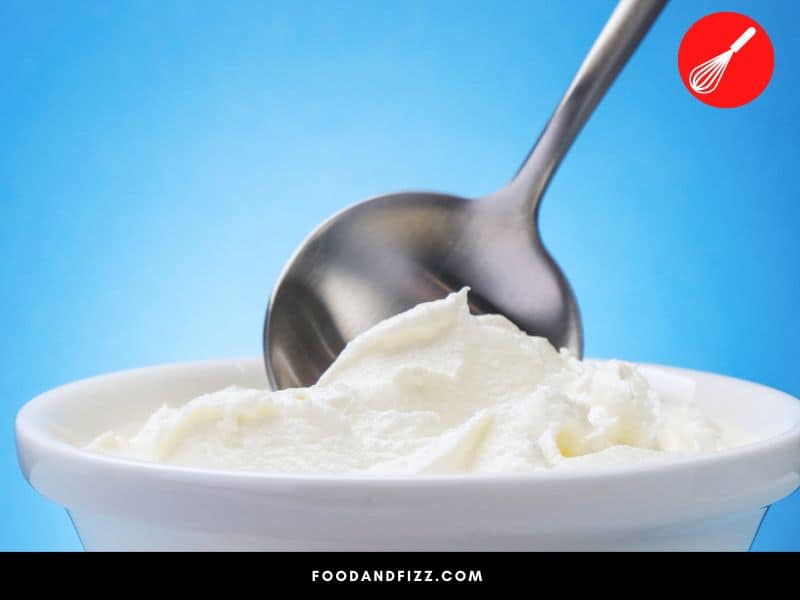
What Is Condensed Milk?
To condense means to reduce something to its most concentrated form. When a good deal of the water is removed from milk, a thick, dense version is left behind. Sugar is added to this to produce what is sold as sweetened condensed milk. It is slightly darker than milk and has a thicker texture.
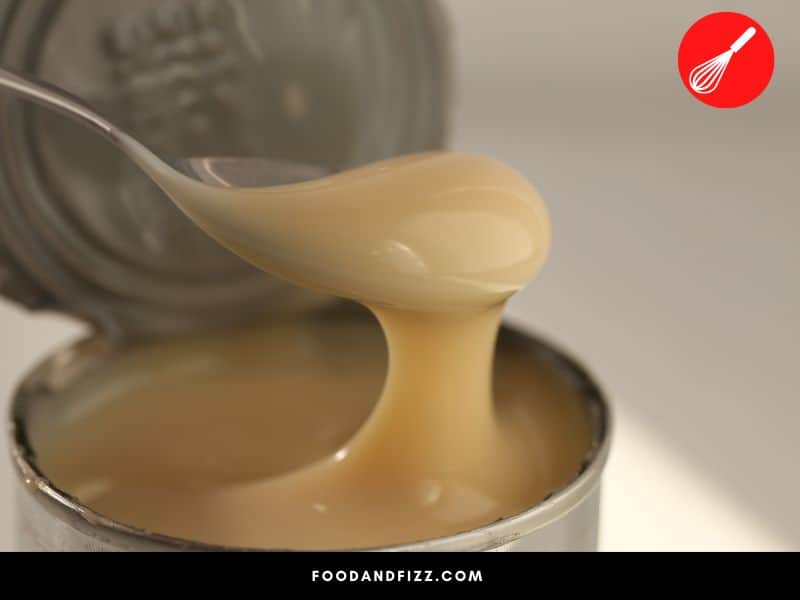
The Difference Between Heavy Cream and Condensed Milk
Both heavy cream and condensed milk are made from whole milk, so they both contain milk fat and milk solids. Heavy cream is natural, though, while condensed milk is processed.
The main difference between the two, however, is the fat content. Heavy cream has quite a high-fat content because it is skimmed directly off the top of whole milk.
Condensed milk results from a mixture of milk and sugar that has been reduced to arrive at the glutinous sweet treat. This reduces the fat content.
Condensed Milk as a Substitute for Heavy Cream
Most heavy cream recipes rely on the high-fat content in the cream. This will give the food thickness and a smooth texture. If you don’t have heavy cream, there are various alternatives you can use.
Milk is one substitute for heavy cream, but it is much thinner. You can mix the milk with butter, which will add the necessary fat. Even then, milk cannot whip up as cream does.
Other useful substitutes for heavy cream are crème Fraiche, mascarpone, and yogurt. A less common substitute is condensed milk. It doesn’t contain as much fat as heavy cream, though, and contains a lot more sugar. Any recipe using condensed milk as a substitute will need to be adjusted.
Making Ice Cream with Condensed Milk Instead of Heavy Cream
Many homemade ice cream recipes use heavy cream. It is a better choice than whipping cream because it has a higher fat content, which gives the ice cream greater stability.
If you don’t have heavy cream handy, you can use condensed milk as a substitute. However, it contains less fat than heavy cream, which means the ice cream will be less creamy. It will also be sweeter. For a really smooth, sweet ice cream, you can combine heavy cream and condensed milk to make the cream.
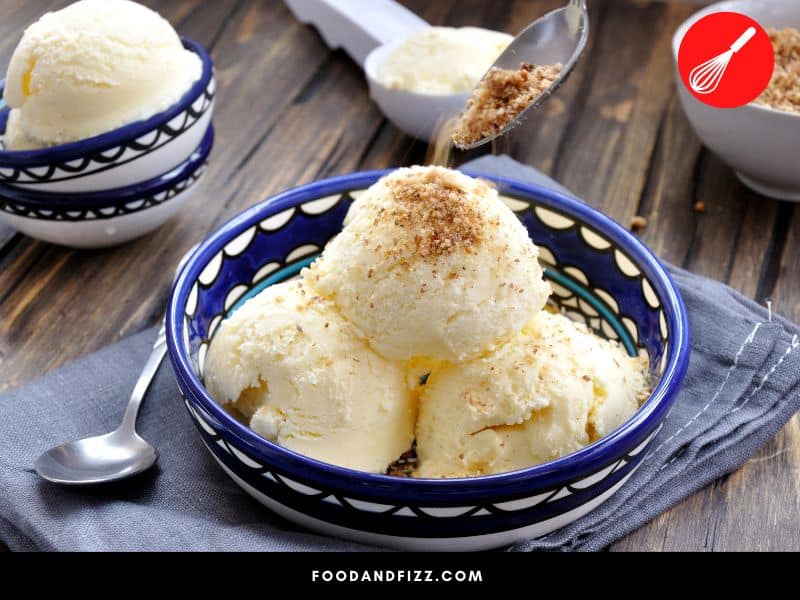
Using Condensed Milk Instead of Heavy Cream in a Cheesecake
Cream cheese is the main ingredient of cheesecake. It is quite dense and needs to be softened slightly. Most recipes for cheesecake call for heavy cream to be mixed in with cream cheese.
It adds some liquid to make it a little smoother and easier to work with. Too much moisture would make the cheesecake too runny, which is why heavy cream is used.
Another alternative to using heavy cream is to use condensed milk in the cheesecake. It adds moisture to the cream cheese but is also quite dense, like heavy cream. Condensed milk is much sweeter than heavy cream, though, so you should use much less sugar in the recipe.
Whipped Condensed Milk Instead of Whipped Cream
If you are short on cream and need something to whip, you can use condensed milk. We usually keep condensed milk at room temperature or in the fridge. If you whip it up at that temperature, it will become a little more liquid but will not whip well.
The trick is to freeze the condensed milk and whip it up when it is really, really cold. To make the mix more effective, you can also put the equipment in the deep freeze for a while before whipping the condensed milk.
Rather than put the whole tin of condensed milk in the freezer, decant it into a plastic container before you do so.
Heavy Cream or Condensed Milk in Frosting
Heavy cream can be used to make the frosting. When it is mixed with powdered sugar, the result is a frosting that is quite smooth and creamy. If you whip the cream before mixing it with the powdered sugar, the texture of the frosting is thicker and has a buttery texture. This makes it easier to spread.
Frosting can be made with condensed milk rather than cream. Because the condensed milk is so sweet, you won’t need to add powdered sugar. The body of the frosting comes from butter that is whipped up with condensed milk.
You can make frosting using a combination of heavy cream and condensed milk. You just need to reduce the amount of powdered sugar and butter in the recipe.

Calorie Count: Heavy Cream or Condensed Milk
Condensed milk is made from regular milk, which is mixed with sugar. The relative quantity of milk fat is 8% in relation to 28% of milk solids. Heavy cream, on the other hand, is skimmed from the top of full cream milk before it is homogenized. This means that heavy cream has a fat content of about 36%.
Although fat does contain a lot of calories, sugar contains even more. Condensed milk has a lot of sugar, much more than heavy cream. This means that condensed milk contains more calories than heavy cream.
Frequently Asked Questions about Heavy Cream vs. Condensed Milk
Which is Better for Whipping, Heavy Cream or Condensed Milk?
The whole cream is better for whipping because it has a high-fat content, which makes it more stable and able to hold a shape. Condensed milk can be whipped but will be softer.
Should I Use Heavy Cream or Condensed Milk in the Frosting?
You can use either heavy cream or condensed milk for frosting. You will need to use powdered sugar with heavy cream. With condensed milk, you should use butter and no powdered sugar because it is very sweet.
Conclusion to Heavy Cream vs. Condensed Milk
Heavy cream and condensed milk are both made from whole milk. That is where the similarities end. They are both quite thick, heavy cream contains more fat than condensed milk. Condensed milk is processed to remove the water. It is also far sweeter than heavy cream. However, condensed milk can be used as a substitute for heavy cream in some recipes.

